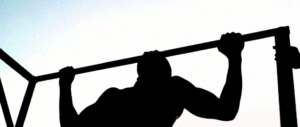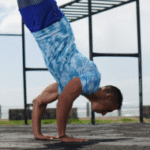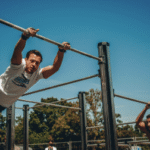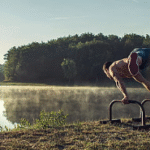Calisthenics PT vs. Traditional Weightlifting PT: A Detailed Comparison for Houstonians
In the diverse and competitive fitness landscape of Houston, finding the right personal trainer (PT) is crucial for achieving your goals. Two of the most effective yet distinct paths to strength are calisthenics and traditional weightlifting. While both build muscle and power, the philosophy, methodology, and outcomes are vastly different.
Choosing between a calisthenics PT and a traditional weightlifting PT isn’t about which is “better,” but about which is the right tool for your specific objectives. This guide will provide a detailed comparison to help you make an informed decision.
The Core Philosophy: Mastering the Body vs. Mastering the Barbell
This is the most fundamental difference and it dictates everything that follows.
Traditional Weightlifting PT: The core philosophy revolves around building absolute strength and maximizing muscle hypertrophy (size). The primary method is using external resistance—barbells, dumbbells, kettlebells, and machines—to create progressive overload. The goal is to lift heavier weight over time. Your body adapts to the external load.
Calisthenics PT: The core philosophy revolves around building relative strength (how strong you are for your body weight) and achieving skill mastery. The primary method is using your own body as resistance. The goal is to master increasingly complex movements. The external load (your body) stays the same, so you adapt by manipulating leverage and mechanics.
The Training Environment and Tools
Where and how you train will look very different.
Traditional Weightlifting PT:
Environment: Typically operates in a conventional gym setting, like the large fitness centers found throughout Houston (e.g., Equinox, Lifetime Fitness) or specialized strength gyms.
Tools: The toolkit is extensive: squat racks, deadlift platforms, benches, a vast array of dumbbells and barbells, cable machines, leg presses, and other isolation equipment.
Calisthenics PT:
Environment: Can operate in a variety of settings. This could be a specialized studio with gymnastics rings and parallettes (like Mekanix Houston or Calisthenics Club Houston), an outdoor park with pull-up bars (like those at Memorial Park), or even your own home.
Tools: The toolkit is minimalist and versatile: a sturdy pull-up bar, parallel bars (or parallettes), and gymnastics rings are the staples. The focus is on the quality of movement, not the quantity of equipment.
[Image collage: On the left, a fully equipped weightlifting gym with squat racks and dumbbells. On the right, a clean, open space with gymnastics rings and parallettes.]
The Methodology: How You Will Progress
The path to getting stronger is fundamentally different in each discipline.
Traditional Weightlifting PT:
Progressive Overload: This is straightforward and linear. To get stronger, you add more weight to the bar or pick up a heavier dumbbell.
Programming: Often uses “body part splits” (e.g., chest day, back day, leg day) to focus on isolating specific muscles and maximizing hypertrophy. The focus is on sets, reps, and load.
Calisthenics PT:
Progressive Overload: This is technical and based on biomechanics. To make an exercise harder, you change the leverage. You progress from a two-arm push-up to an archer push-up, and eventually to a one-arm push-up. You are mastering movement patterns of increasing difficulty.
Programming: Often uses “movement pattern splits” (e.g., push day, pull day, legs) or is structured around skill acquisition. A significant portion of the session may be dedicated to technical drills for a specific goal, like the handstand or muscle-up.
The Outcome: The Physique and the Functionality
The type of strength and the resulting physique you build will be distinct.
Traditional Weightlifting PT:
Physique: Excellent for maximizing muscle size. This is the most direct path to a classic “bodybuilder” or “powerlifter” physique with large, full muscle bellies.
Functionality: Builds incredible absolute strength, making you very good at moving heavy external objects. This is ideal for strength sports or activities requiring raw power.
Calisthenics PT:
Physique: Develops a lean, defined, and athletic physique, often compared to that of a gymnast. It emphasizes a strong core and a V-tapered back.
Functionality: Builds exceptional functional strength, mobility, and body awareness. The strength is highly transferable to real-world activities and sports that require you to control and move your own body through space with agility and power.
[Image comparing two athletic physiques: a larger, more muscular bodybuilder on the left, and a leaner, more defined gymnast on the right.]
Which PT is Right for You? A Houstonian’s Guide
Your Primary Goal Is…
A Traditional Weightlifting PT is Your Best Bet If…
A Calisthenics PT is Your Best Bet If…
Aesthetics
You want to maximize muscle size and achieve a classic, muscular physique.
You want a lean, defined, athletic “gymnast” physique.
Strength Type
You want to maximize your absolute strength (your one-rep max on a lift).
You want to maximize your relative, pound-for-pound strength and body control.
Skill Goal
To master heavy, technical lifts like the squat, bench press, and deadlift.
To master impressive bodyweight skills like the muscle-up, handstand, or human flag.
Training Environment
You thrive in a traditional gym with a wide variety of equipment.
You want the freedom to train anywhere with minimal equipment.
Functionality
To be exceptionally strong at lifting and moving external objects.
To be strong, agile, and coordinated in movements that involve your own body.
Injury Profile
You are generally injury-free and comfortable learning to manage heavy loads.
You are looking to build strength in a way that is often lower-impact and builds joint resilience.
Conclusion:
The choice between a calisthenics PT and a traditional weightlifting PT in Houston is a choice between two expert paths to strength. The weightlifting coach is your guide to mastering external resistance and building maximum size and power. The calisthenics coach is your guide to mastering your own body, building functional strength and unlocking incredible skills. The best decision comes from clearly defining your personal goals and choosing the expert whose philosophy and methodology will get you there most effectively.

Calisthenics PT vs. Traditional Weightlifting PT: A Detailed Comparison for Houstonians
Route
Calisthenics Gym Houston Functional Bodyweight Training
Secondary phone: (346) 483-3195
Email: info@calisthenicsclubhouston.com
URL: https://calisthenicsclubhouston.com/
Monday 6:00 AM - 7:00 PM Tuesday 6:00 AM - 7:00 PM Wednesday 6:00 AM - 7:00 PM Thursday 6:00 AM - 7:00 PM Friday 12:00 PM - 6:30 PM Saturday 9:45 AM - 12:00 PM Sunday 3:00 PM - 5:00 PM





